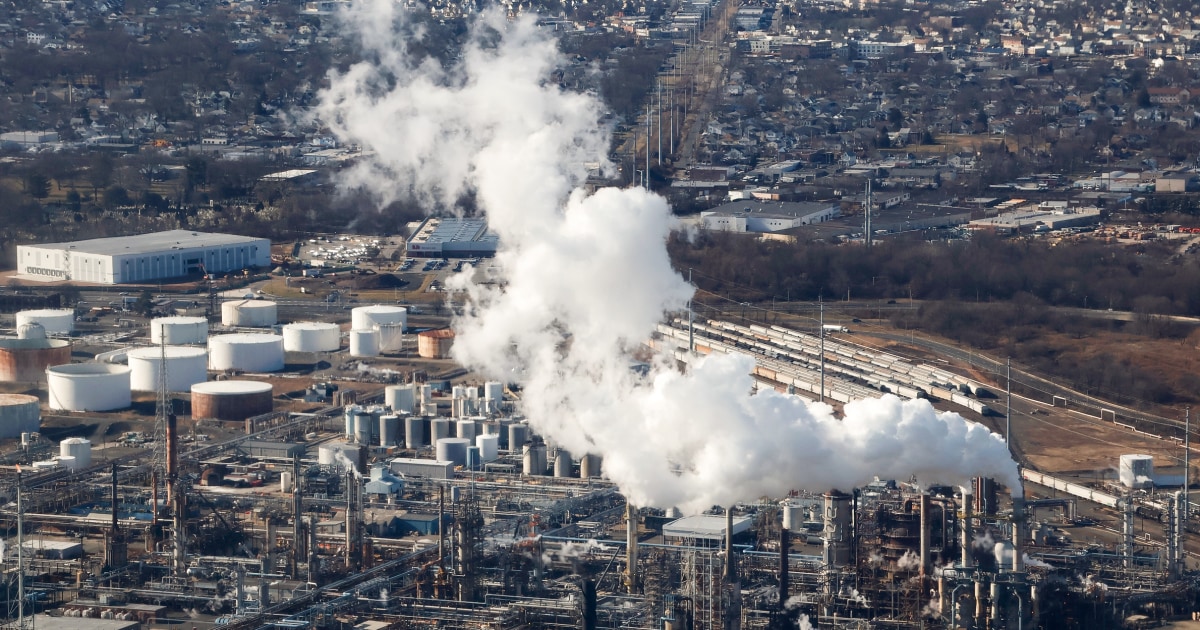
The Biden administration on Wednesday announced a new air quality standard that aims to prevent deadly illnesses linked to pollutants.
The standard cracks down on fine particulate matter — tiny particles in the air that can penetrate deep into the lungs. Much of this pollution in the air comes from the combustion of gasoline, oil, diesel fuel or wood, usually from sources such as factories, power plants, vehicles, wildfires or fireplaces.
The Environmental Protection Agency said Wednesday that “a broad and growing body of science” links particulate matter to serious and sometimes fatal illnesses.
Long-term exposure can increase the risk of heart disease, lung cancer and chronic kidney disease, and may also be associated with an increased risk of neurological disorders. Short-term exposure can increase the risk of cardiac arrest, asthma attacks or stroke. Both types of exposure are directly linked to hospitalizations and deaths.
“It’s very clear that particulate matter kills people and makes people sick,” said Laura Kate Bender, assistant vice president for healthy air at the American Lung Association. “We’ve also seen over time that particulate matter is more dangerous at lower levels than was previously realized.”
Before Wednesday, the EPA said that the annual concentration of particulate matter within a state should not exceed 12 micrograms per cubic meter, calculated as an average over three years. The American Lung Association and other health organizations have pushed to lower that limit to 8 micrograms per cubic meter.
The EPA’s new standard is close to that target: It sets an annual threshold of 9 micrograms per cubic meter.
“It is a substantial change, a meaningful change. It’s definitely a victory for public health,” said Francesca Dominici, a data scientist at the Harvard T.H. Chan School of Public Health.
Lowering the threshold even further would have a greater health benefit, she said, “but considering where we are right now, I think it’s definitely a big step in the right direction.”
Bender said the new standard is “not as strong as the Lung Association had called for, but nevertheless, it’s going to save a lot of lives.”
The EPA estimated that the new standard would prevent up to 4,500 premature deaths in the first year once states are fully compliant in 2032.
Dominici said the 4,500 estimate is based, in part, on her own research: Her 2020 study found that lowering the air quality standard to 10 micrograms per cubic meter would save more than 143,000 lives over a decade.
The EPA also estimated that the new standard will yield up to $46 billion in health benefits, such as avoiding lost workdays and preventing emergency department visits.
Bender said that figure is likely an undercount. “When it comes to all of the health impacts of particle pollution, there’s not always a way to monetize it or to put a number on it,” she said.
Scientists are still uncovering negative health effects of air pollution. Emerging evidence suggests that exposure to particulate matter might impair cognitive function or accelerate cognitive decline. And a study last year found that higher exposure to air pollutants during pregnancy might negatively impact a child’s neurodevelopment after birth.
The EPA said in an analysis Wednesday that states likely won’t need to meet the new air quality standard until 2032, since it takes time to implement changes to lower pollution levels. But according to Dominici, “there’s going to be much more pressure to try to comply with the new standard much sooner than that.”
Bender said the EPA will work with states to determine which counties are not meeting the new standard, then develop cleanup plans that states can implement.
“It’s a long process, but it works,” she said. “We’ve seen it work over the years as communities have ratcheted down on harmful levels of pollution.”
Right now, the EPA predicts that 52 counties in the United States won’t meet the new standard by 2032. Of them, 23 counties are in California. The list includes Los Angeles, San Diego and Sacramento.
Bender said California has faced “really significant air pollution challenges compared to the rest of the country.” California cities dominated the American Lung Association’s rankings last year of the most polluted metropolitan areas in the U.S.
Wildfire smoke and traffic pollution are likely the main contributors to the problem, Dominici said.
“Because of climate change, wildfires are becoming more extreme and more frequent,” she said. “And we do know that when there are wildfires, this level of [particulate matter] can go very, very, very high.”
Hispanic, Asian and Black people also live in areas with higher annual concentrations of particulate matter, on average, according to the EPA analysis. That’s because major sources of pollution such as power plants are commonly built in communities of color, and these areas may have limited resources to regulate emissions.
Dominici said Black and low-income people often have higher rates of chronic health issues such as diabetes or heart disease, and more restricted access to quality health care. As a result, she said, “an additional increase of exposure to air pollution makes them sicker.”
Her study last year found that lowering concentrations of particulate matter would have a greater impact on preventing deaths among Black and low-income white people than among high-income white people.
CORRECTION (Feb. 9, 2024, 11:30 a.m. ET): A photo caption in a previous version of this article misidentified an oil refinery in Linden, N.J. It is a Phillips 66 refinery, not an Infineum facility.






